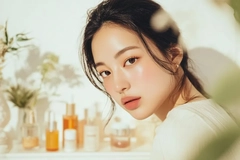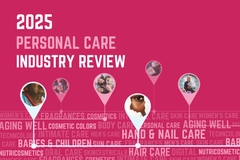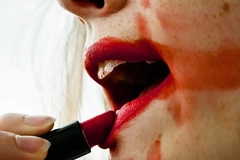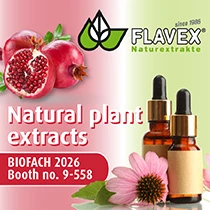Estée Lauder funds US university research to develop sustainable and preventative skin care

The Estée Lauder Companies (ELC) and Massachusetts Institute of Technology (MIT), US, have teamed up to research biodegradable materials for cosmetics and explore solutions that combat the sun’s effect on the skin. ELC anticipates applying the results to personal care products that cater to sustainable and anti-aging trends.
“Fostering strategic collaborations with world-leading scientific and academic institutions has long been a critical approach to driving innovation at ELC and enables us to remain at the forefront of research,” says Carl Haney, executive VP, research, product, and innovation officer at ELC.
Dr. Ana Jaklenec, principal investigator at MIT’s Koch Institute for Integrative Cancer Research, and Dr. Robert Langer, biotechnologist, chemist, and inventor, are leading the laboratory.
ELC is funding the testing of Jaklenec’s recently developed class of biodegradable materials that break down into sugars and amino acids. These particles could replace plastic beads used in beauty products. They also encapsulate nutrients such as vitamin A, allowing them to be used in various cosmetic applications.
The lab will also explore new solutions to combat visible sunlight and blue light’s effects on the skin. Sun exposure is one of the largest contributors to skin aging — 90% of visible changes associated with aging are caused by the sun, according to the US Environmental Protection Agency.
The research will focus on developing dispersible, stable, and formulation-compatible materials that effectively block visible light and protect consumers from visible light-induced pigmentation and potential photodamage.
“As scientists, we deeply value the opportunity to translate our work from the lab to the real world,” says Dr. Jaklenec. “With this new collaboration, we look forward to exploring the potential ways our research can lead to sustainable and innovative materials that drive impactful advancements in skin health.”
University investments
Under the theme of preventative and sustainable skin care, Estée Lauder sponsored the Century Summit V last week, hosted at Stanford University, US, with the Stanford Center on Longevity.
Collaborating with The Longevity Project, the Century Summit generates discussions on how society can restructure work, reorganize cities, enhance learning, create financial security, and develop greater health and vitality to promote longevity.
 Paulina Porizkova reunites with ELC after 30 years.In the panel discussion, “Comfortable in Our Own Skin: Can the Beauty Industry Lead the Way?,” Estée Lauder figures explored how the beauty industry is responding to the trend of longevity and how the narrative around aging and aesthetics is changing.
Paulina Porizkova reunites with ELC after 30 years.In the panel discussion, “Comfortable in Our Own Skin: Can the Beauty Industry Lead the Way?,” Estée Lauder figures explored how the beauty industry is responding to the trend of longevity and how the narrative around aging and aesthetics is changing.
“When I was signed to Estée Lauder, I was 28, and it was almost deemed too old for a beauty contract. The fact that Estée Lauder has stood by me for more than 20 years shows how they are leading this shift toward celebrating women at any age,” said Estée Lauder global brand ambassador Carolyn Murphy during the panel.
Despite the push toward aging acceptance, Innova Market Insights data indicates that 33% of consumers globally consider anti-aging the most important functional skin care feature.
The beauty brand is investing in university research that can create solutions supporting skin and environmental longevity. Estée Lauder was the inaugural supporter of the Stanford Center on Longevity’s new Program on Aesthetics & Culture.
“Longevity is a multi-generational conversation. At Estée Lauder, we are showing that skin longevity goes beyond anti-aging to pro-aging, educating and empowering consumers to look and feel their best at any age,” added Tara Connaughton, VP of Global Communications at Estée Lauder.
To age or not to age
Longevity does not solely apply to ageless beauty but to the broader scope of promoting a healthy skin aging process. In this vein, Estée Lauder has reintroduced actor, model, and anti-ageism activist Paulina Porizkova as its newest Global Brand Ambassador.
Porizkova served as a spokesmodel for Estée Lauder from 1988–1995, and ELC says her return represents a shared mission to redefine standards of beauty. The company aims to “inspire and empower women around the world to see their value and celebrate their beauty at any age.”
The new ambassador will endorse skin care and makeup products that align with her pro-aging values. MIT researchers will develop biodegradable solutions for cosmetic applications.
MIT researchers will develop biodegradable solutions for cosmetic applications.
“Over the last 30 years, I have become a woman who has a voice, strong opinions, and an even stronger sense of self. Estée Lauder approached me to work with them again, not despite these values, but because of them,” says Porizkova.
“This is more than a job, it’s my purpose, an opportunity … to show women around the world that with age comes power and possibility. This is about more than representation. It’s about being seen and celebrated.”
Porizkova’s first campaign will debut in Spring 2025 across print, digital, and in-store alongside Estée Lauder’s Revitalizing Supreme+ franchise. According to ELC’s website, the Revitalizing Supreme+ collection is a range of moisturizers designed to achieve “healthier and younger-looking skin.”












